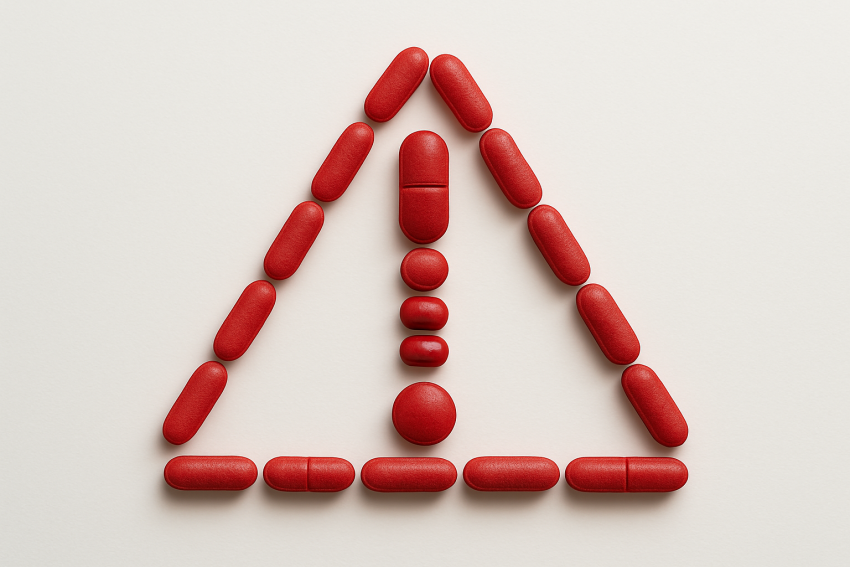Are we facing an 'adverse event' or a 'serious incident'?

One of the main objectives of Regulation (EU) 2017/745 on medical devices (MDR) is to enhance patient safety through a uniform market surveillance system. However, it is precisely in the application of these regulations where a significant problem arises: the conceptual ambiguity and confusion between the terms 'adverse event' and 'serious incident'. This terminological inconsistency is more than just an imprecise use of language, it carries real risks for manufacturers, consultants and the reporting process to the competent authorities.
Índice de contenidos
Index of contents
Index du contenu
Inhaltsverzeichnis
Indice dei contenuti
The MDR: defined terms, distinct scope
In the preamble of the MDR, recital no. 79 states the following: 'The reporting of serious adverse events or device deficiencies during clinical investigations and the reporting of serious incidents occurring after a device has been placed on the market should be clearly distinguished to avoid double reporting.'
This is also reflected in the definitions of Article 2:
'Incident' (Article 2, point 64): any malfunction or deterioration in the characteristics or performance of a device made available on the market, including use-error due to ergonomic features, as well as any inadequacy in the information supplied by the manufacturer and any undesirable side-effect.
'Serious incident' (Article 2, point 65) any incident that directly or indirectly led, might have led or might lead to any of the following:
- the death of a patient, user or other person,
- the temporary or permanent serious deterioration of a patient's, user's or other person's state of health,
- a serious public health threat.
'Adverse event' (Article 2, point 57): any untoward medical occurrence, unintended disease or injury or any untoward clinical signs, including an abnormal laboratory finding, in subjects, users or other persons, in the context of a clinical investigation, whether or not related to the investigational device.
'Serious adverse event' (Article 2, point 58): any adverse event that led to any of the following:
- death,
- serious deterioration in the health of the subject, that resulted in any of the following:
- life-threatening illness or injury,
- permanent impairment of a body structure or a body function,
- hospitalisation or prolongation of patient hospitalisation,
- medical or surgical intervention to prevent life-threatening illness or injury or permanent impairment to a body structure or a body function,
- chronic disease,
- foetal distress, foetal death or a congenital physical or mental impairment or birth defect.
IMDRF: Global classification framework, without legal value
The document IMDRF/AE WG/N43 FINAL:2020, produced by the International Medical Device Regulators Forum (IMDRF), establishes detailed terminology to define adverse events (AE) and serious adverse events (SAE). It equates incidents/events that are treated differently by the EU.
The IMDRF itself states:
'Depending on jurisdictions, the terms "adverse event" (in its post-market meaning) and "incident" can typically be used interchangeably.'
This lack of definition creates uncertainty. The IMDRF terminology serves as a technical coding system, but it is not legally binding within the MDR framework.
A reportable event in the context of an inaccurate translation could correspond to IMDRF codes A21 or A2101 related to instructions for use or labelling:
| A21 | Problem associated with device markings/labelling, instructions for use, training and maintenance of documentation or guidelines. |
| A2101 | Problem associated with the written, printed or graphic material accompanying or affixed to the device or any of its packaging. This includes verbal instructions relating to identification, technical description, and usage provided by the device manufacturers. Problems can include but are not limited to this material being unclear, missing, worn out, incorrect or inaccurate. |
European Commission: MDR Term + IMDRF Code = Obligation
Since 2020, the European Commission requires manufacturers to classify serious incidents using the IMDRF codes of the 'adverse events' system in the MIR form (see the European Commission's FAQ sheet). This does not constitute a terminological incorporation, but merely a technical tool to standardise data analysis:
'Notably, the word "adverse event" in the present context includes (serious) incident as defined in the EU (MDR art 2. definition 65).'
In the UK, the competent authority is the Medicines and Healthcare products Regulatory Agency (MHRA), which has defined clear procedures for the reporting of incidents by users, operators and distributors. In this link, the MHRA provides detailed information for reporting incidents.
The manufacturer must investigate this notification, give their opinion and, if necessary, initiate corrective actions. In turn, the MHRA carries out a risk assessment.
On the other hand, (serious) adverse events that occur in the clinical investigation of a medical device must be reported through EUDAMED or the Yellow Card Scheme run by the MHRA. The form for reporting through the Yellow Card Scheme is available at this link.
USA: Standardised use of terms, but not transferable
The United States Food and Drug Administration (FDA) uniformly uses the term 'adverse event' for all safety-related events, both in clinical trials and after the authorisation of the device. Manufacturers must report events related to death, serious injuries or device malfunctions in accordance with Part 803 of Title 21 of the CFR. The clear use of terms is consistent, but is not compatible with the MDR.
Conclusion: Terminological precision is a regulatory necessity
The MDR requires the use of the term '(serious) adverse event' in the context of clinical investigations and the term '(serious) incident' in post-market surveillance. The IMDRF coding is only a technical classification tool and should not lead to misunderstandings regarding terminology within the European Union.
Recommendations for manufacturers and regulatory affairs managers:
- Use 'adverse event' only in the context of clinical investigations (e.g., when preparing your technical documentation).
- Use '(serious) incident' for all reportable cases after the making available on the market.
- Take into account that the IMDRF terminology is used solely for coding purposes and not for selecting terms, even in the case of AE and SAE.
- Ensure that the terminology is appropriate in other languages when translating your technical documentation or Field Safety Notices (FSN).
Correctly speaking the language of the regulations is essential in order to meet MDR requirements and gain the trust of authorities and patients.
An experienced language service provider specialising in medical devices will ensure that both technical terminology and regulatory requirements are correctly applied in each target language. Only precise and context-specific terminology will protect against reporting errors and legal risks. Translations must also comply with the MDR, so it is crucial to work with specialised language service providers who combine regulatory expertise with linguistic precision.
Other articles you may be interested in:

Alejandra Keller is a German and Spanish native speaker with a high level of proficiency in English. She holds a translation degree from the University of Heidelberg and has lived and studied in Germany, the United States, Ireland, Spain and Peru. With a strong passion for international communication, she is currently working as Project Manager at AbroadLink.



Add new comment